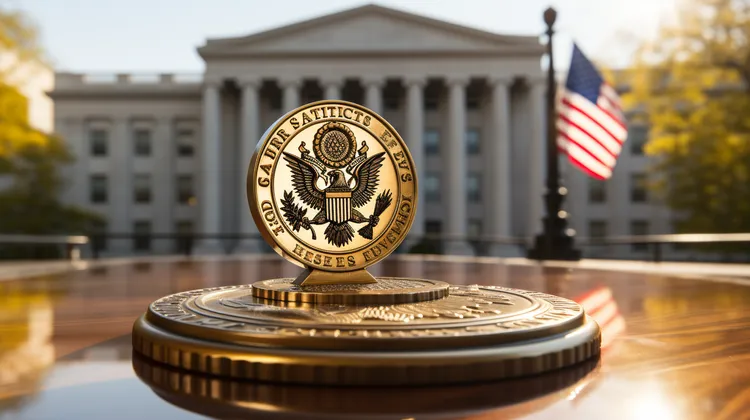
U.S. Treasury Eyes Regulation on Stablecoins Like Tether
A top U.S. Treasury official has raised alarm bells for the cryptocurrency ecosystem, especially targeting stablecoins such as Tether. This is a move that could spell significant policy changes and regulatory actions in the near future. Stablecoins, which are cryptocurrencies pegged to stable assets like the U.S. dollar, gold, or other fiat currencies, are garnering intense scrutiny due to their rapidly growing market size and their potential impact on the financial system.
Stablecoins have become increasingly attractive to investors and users seeking to avoid the volatility that characterizes the vast majority of cryptocurrencies such as Bitcoin and Ethereum. Tether (USDT), in particular, has found massive adoption due to its claim of a 1:1 pegging with the US dollar, promising users stability and ease of transactions. This assurance of stability and safety is precisely what has caught the attention of regulators.
The top U.S. Treasury official has indicated that the oversight of stablecoins is a matter of growing concern. Given that stablecoins are touted as safe havens, regulators are worried about the oversight and the true backing of these digital assets. Tether Inc., the company behind Tether, has faced questions and even legal actions about whether its stablecoins are fully backed by dollar reserves as they claim.
The lack of transparency and regulation in the stablecoin market is a point of contention. With no central authority or standardized reporting to ensure that stablecoins hold adequate reserves, they may pose significant risks to the financial system. If a large number of users were to simultaneously redeem their Tether, and if Tether Inc. were unable to satisfy these redemptions, this could create a liquidity crunch and destabilize the market.
The Treasury’s focus is not only on the immediate risks posed by stablecoins but also on the broader implications for the traditional financial system. Stablecoins operate on a global scale, often without borders, which could lead to regulatory arbitrage where operators seek out jurisdictions with the weakest regulations. This environment can be fertile ground for money laundering, terrorist financing, and other illicit activities.
The systemic risk posed by stablecoins, given their growing integration with the traditional financial system, could lead to cascading failures if left unchecked. This is especially concerning in scenarios where a stablecoin holds a significant portion of its reserves in risky assets, which could depreciate in value, thus undermining the stability promised to users.
In light of these concerns, the Treasury official’s warning may be a prelude to upcoming regulations. The United States, among other countries, is examining how to apply existing financial regulations to stablecoins and whether new regulations or legislation are needed. This could include measures to ensure greater transparency, enforce reserve audits, and establish clearer guidelines for redeemability.
The federal government’s involvement is an acknowledgment of the growing importance of stablecoins in the financial ecosystem. The industry responds with caution, noting that overly stringent regulations could stifle innovation and force the sector to move to jurisdictions with more favorable regulatory climates.
The dialogue between regulators and the cryptocurrency industry is essential to ensure that the development of stablecoins benefits the financial system without compromising stability. The Treasury’s warnings are a call to action for stablecoin issuers like Tether to prepare for a future where adequate compliance and consumer protection are paramount.
The Treasury official’s warnings underline the complex status of stablecoins in the financial ecosystem. As Tether and its peers continue to flourish, their intersection with traditional finance could invite stricter regulations to protect users and maintain the integrity of the financial system. Stakeholders across the board, including regulators, users, and stablecoin issuaries, will need to collaborate to navigate the evolving landscape of financial innovations. The coming months could prove pivotal for the stablecoin market as U.S. officials look to shore up the defenses of the financial system against potential stablecoin-induced vulnerabilities.
7 thoughts on “U.S. Treasury Eyes Regulation on Stablecoins Like Tether”
Leave a Reply
You must be logged in to post a comment.
It’s all about balance! Smart regulation can help stablecoins thrive responsibly.
Fascinating to see how stablecoins like Tether will evolve with new policies!
This potential regulatory wave could be the bridge between traditional finance and crypto.
Better safe than sorry, especially when it comes to financial stability!
Transparency and compliance are key! Hoping this leads to a more trustworthy crypto ecosystem.
Eager to see a solid framework that can support the innovation of stablecoins while managing risks.
Regulations could pave the way for a whole new level of mainstream crypto adoption.